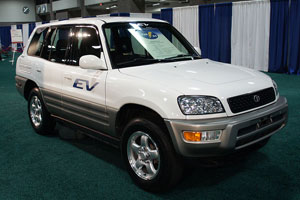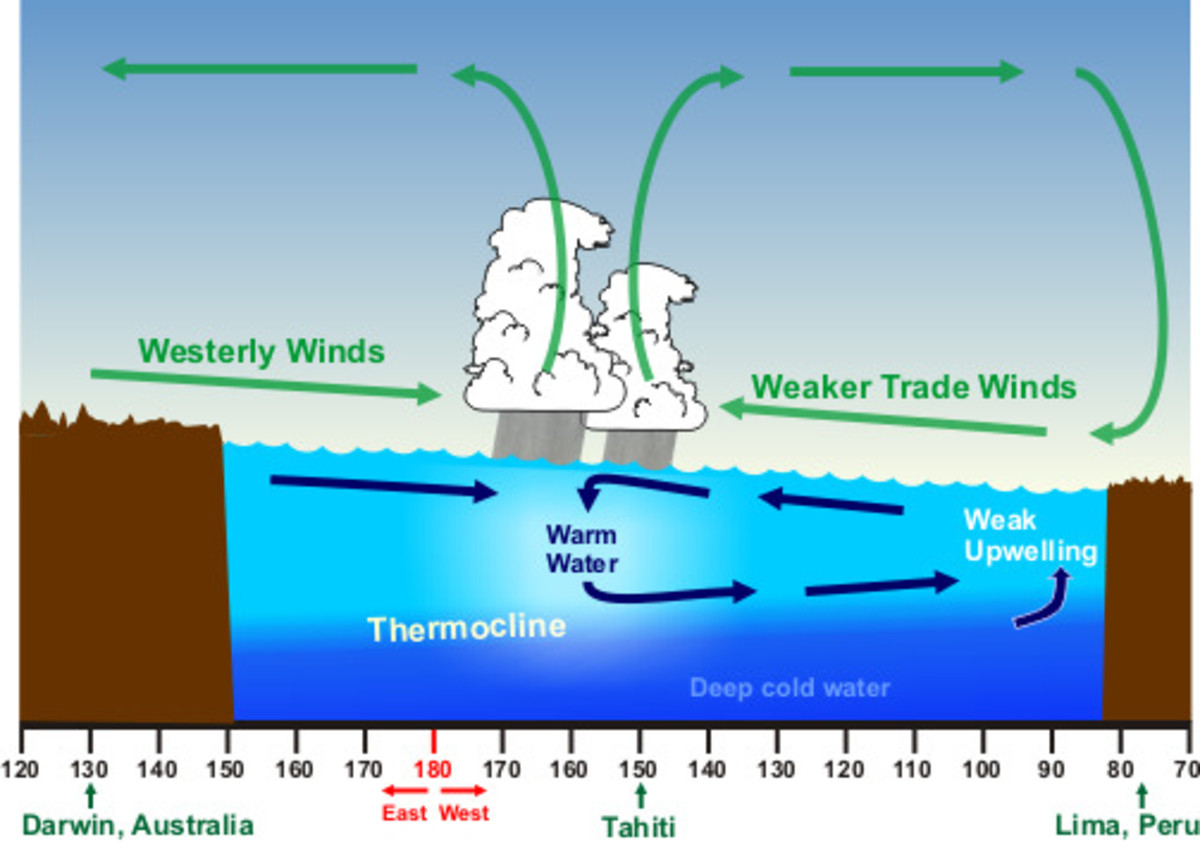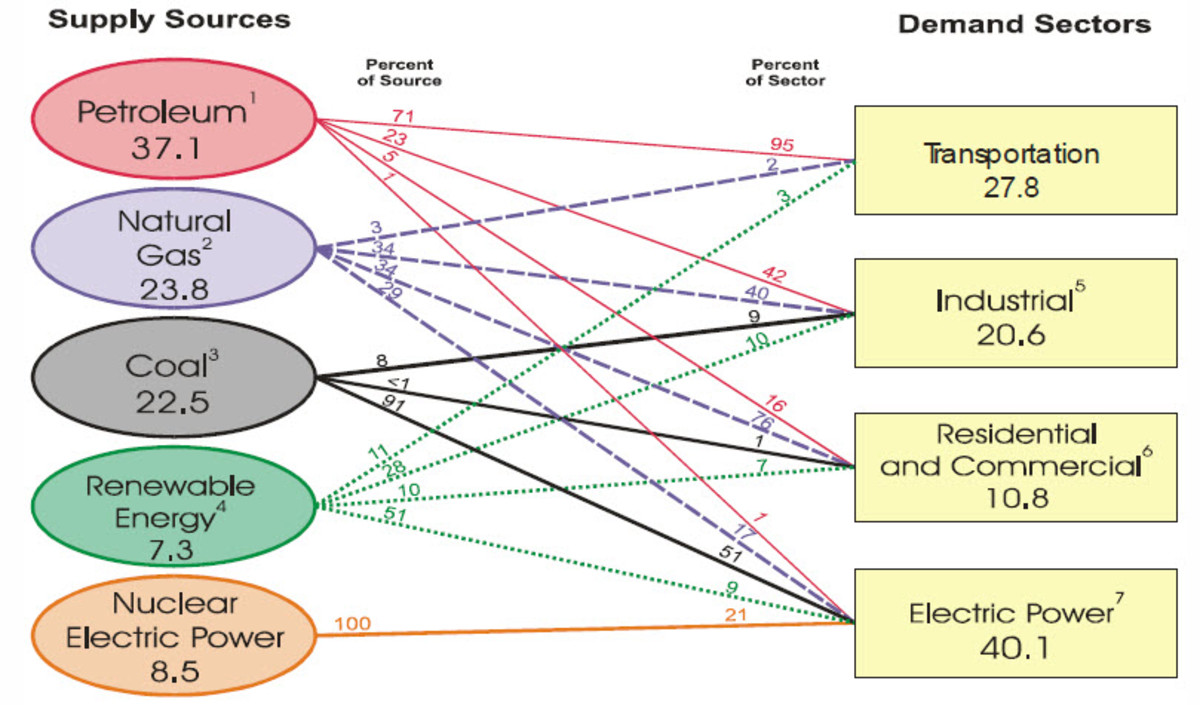The Green Movement and the Silver Bullet
Introduction
This article looks at the green movement and how it is divided by pessimists and those who believe in the power of science and technology to come up with elegant and efficient solutions, or in other words ‘silver bullets’, with which to kill the looming specter of environmental disaster.
Erhlich's ideas
The facts not in doubt
Scientists have been debating for the last 10 years about global warming. Since the Al Gore movie ‘An Inconvenient Truth’ the mass media have focused on this issue. The United Nation’s did its own study and called in the best of the scientific community. They are in agreement with the fundamental tenets that:
1) Carbon dioxide levels are rising exponentially
2) This is trapping the sun’s heat and causing global warming
3) The increase in atmospheric carbon levels is due to man’s activity
Juian Simon's ideas
Politics and the economy
This much is no longer in doubt. Although George W. Bush didn’t subscribe to the theory, Obama does. And although China couldn’t agree to an international emission reducing treaty in Copenhagen they were at least at the table, and aware of what was at stake. The academic and world leadership communities both agree that global warming exists and that it is a serious problem.
That sadly is where the world consensus ends. Politics clouds the clear waters of science – developing nations feel it is unfair that they must share the cost for reducing carbon emissions with richer countries. They feel that rich countries have already done their share of carbon emitting during their earlier industrial revolutions. The visible values of a growing economy are more jobs, bigger GDP, increasing wages and a rise in the general standard of living. This is a hard argument to counter by making prognostications that the world is going to be rapidly different in the future. Such predictions seem like religious doomsday predictions.
Abandoned electric vehicle

The optimists and the pessimists
For those who do take the threat of global warming seriously, there are two basic camps.
There are the pessimists who feel the point of no-return is already upon us; that the parts per million ratio of green house gases in the atmosphere is so high that any more coal burning power plants would tip us over the edge. These pessimists also cite population growth and the concurrent problem with food and water supplies as factors in a god-awful mess that humanity finds itself in. Paul Erhlich who wrote the Population Bomb in 1968 is one of the leaders of this group. They feel that other than a drastic drop in living standards and the immediate cessation of carbon pollution allied to a world-wide birth control program no measures will avert disaster.
Gaia Theory comes into play at this point. If the earth and its ecosphere is a self-regulating body then it is tempting to posit that the earth will wreak its revenge on humanity for causing the damage and that a balance will be found. Indeed, some think that global warming and the possibility of losing a third of the world’s existing landmass will be the Gaia corrective meted out to us.
The other school of thought is one of optimism. Erhlich’s great rival, Julian L. Simon, gave a lot of impetus to this movement when he won his bet with Erhlich that the cost in real terms of 5 resource commodities would drop in price over 10 years. Erhlich believed that shortages and growing competition to turn raw materials into commercial success would drive up the price of such things as copper. Simon on the other hand believed that man would adapt; that he would innovate creative solutions to overcome shortages and technical problems. Simon’s belief in humanity’s adaptability is connected to the prevalent notion that technology and science can solve all problems.
Simon chose his 5 commodities carefully because he won the bet. If he had chosen oil he would have lost.
The idea of a series of silver bullets to solve our environmental problems does on the surface seem persuasive. Solar panels can generate clean energy from the sun. We can harvest wind energy with turbines. Heat pumps can use the difference in temperature between above ground and below ground to reduce heating costs. Insulation can make houses with virtually no heating a possibility (see passive house). If fresh water runs low we can desalinate. Hydrogen cells could be the batteries of the future with a waste product that is just water. Nanotechnology has enabled us to potentially make photovoltaic panels that are just 1 molecule thick. Indeed it could be a technology to let make microscopic factories to produce consumer items.
Journals and websites are filled with exciting news about these silver bullets that just need to be shot at the problem to make it go away.
And yet, the arctic ice cap is due to melt by 2030. The United Nations are still predicting gloom.
There has been a backlash in several countries with alternative energy. The Japanese have fallen out of love with nuclear energy. The British are questioning the wisdom of wind farms because electricity must be spent powering the turbines when there isn’t enough wind. People are also beginning to realize the prohibitively high carbon costs of building solar panels in the first place. This is because they are made from silicon, the extraction of which from silica needs a lot of electricity.
Then there is the sabotage by big business. The American car industry bought up the patents to scupper the early EV (electric vehicle) using NiMH batteries (nickel metal hydride) that could go 10,000 miles without a battery change. As with the pharmaceutical business, the energy and automotive industries are very much prepared to bury the silver bullets under legal documents and patents to inhibit progress and maximize profit.
The sad thing is that I really don’t want to be a pessimist. I want as much as the next person for the silver bullets to turn the situation around for the planet. I just think that looking at these problems outside of the realms of politics is pointless. It is clear that political change and environmental change are very much interconnected; and that until America, China, India, Japan, Brazil and much of Europe has a profound change in politics the doomsday prophets will look less and less crazy over the next few years.
More Information
- Green Interior Design and the Battle of Ideas
About the failure of Toyota's EV4-EV - The Cost of Solar Energy
This article looks at the costs in terms of energy and carbon emissions of making photovoltaic panels and asks whether solar energy as it is used today is really as environmentally friendly as we imagine.










